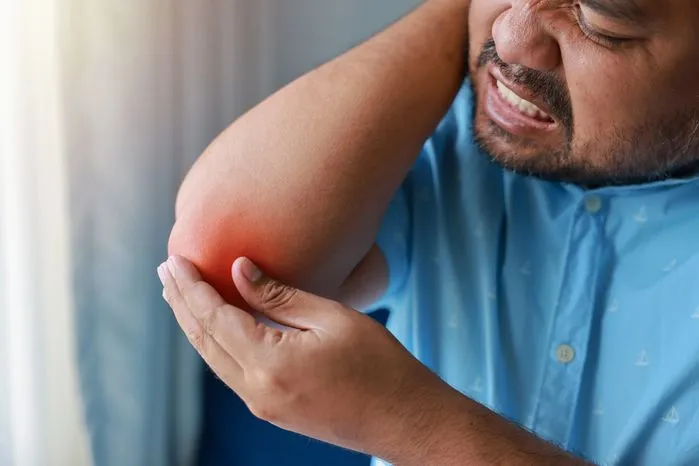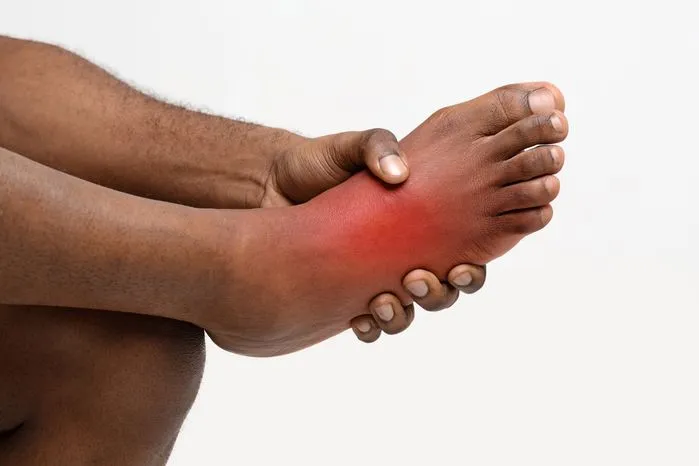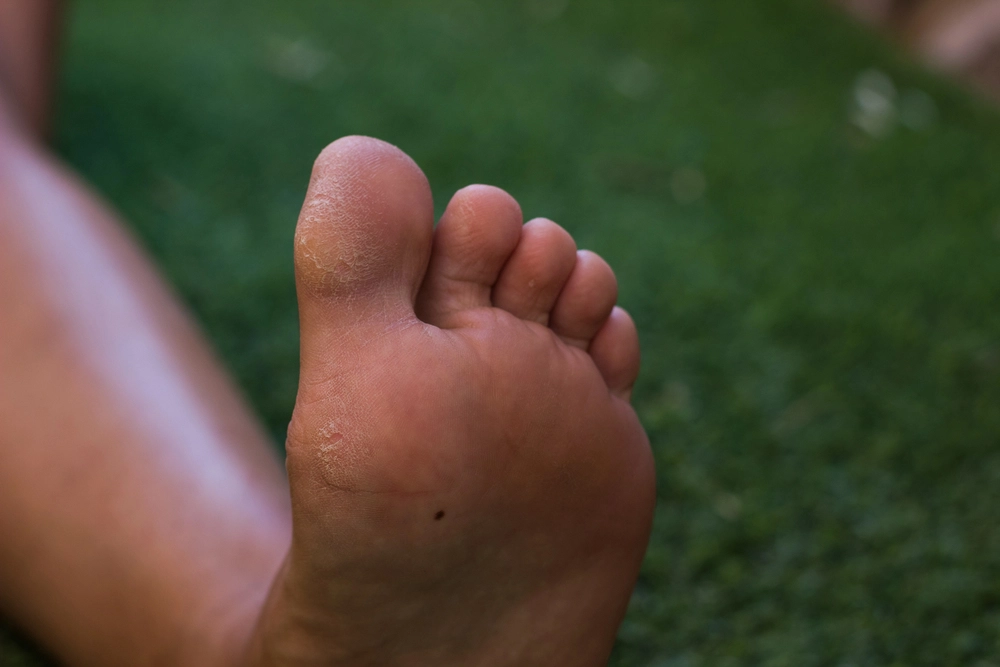
Releford Institute’s Opinion on What Causes a Heel Spur
At RelefordInstitute.com, we frequently address heel spurs, often caused by repeated strain from high-impact activities or unsupportive footwear. The pain feels like a stabbing or aching sensation in the heel. We advise patients that wearing supportive shoes and doing regular stretching significantly reduces this discomfort. Knowing these causes and solutions empowers people to manage their foot health and stay active without heel pain.
Key Takeaways
- Strain of foot muscles, and ligaments, or abnormal walking leads to the development of heel spurs.
- Engaging in activities such as running on hard surfaces or donning ill-fitting shoes might also contribute to this condition.
- Certain medical conditions like flat feet or unusually high arches could increase the risk of heel spurs.
- Heel spurs present with fluctuating pain often triggered by either activity or lack of it. Upon standing, individuals experience sharp discomfort.
- Other symptoms to watch out for include inflammation, swelling in the heel area, warmth, and a visible bump beneath the skin.
Understanding Heel Spurs
Heel spurs, often misinterpreted, are prevalent foot conditions affecting numerous individuals globally. These growths, which are bony, form on the heel bone's underside, a direct result of intricate heel spur anatomy. Detection of such protrusions, although not always visible, is possible through diverse diagnostic methods.
A strong connection exists between heel spurs and plantar fasciitis, an inflammatory condition of the tissue band linking the heel bone to the toes. Development of heel spurs commonly arises from excessive foot muscle and ligament strain or continuous tearing of the heel bone's covering membrane.
The employment of radiological examinations, such as X-rays, assists in identifying heel spurs. These diagnostic instruments offer a vivid representation of heel spur anatomy, facilitating the accurate detection of bony growths. However, crucially, discomfort often does not originate from heel spurs themselves but from associated conditions like plantar fasciitis.
Comprehension of heel spurs is vital in maintaining foot health, paving the way for effective treatment strategies aimed at relieving any discomfort.
Common Symptoms of Heel Spurs
Recognizing heel spur symptoms constitutes a crucial step toward managing this foot condition effectively. These symptoms vary greatly in duration and impact daily routine, depending on the individual.
Common symptoms include:
1. Pain that comes and goes, often associated with physical activities or after periods of inactivity. How active you are affects this pain's duration.
2. Experiencing sharp pain in your heel upon standing, particularly after waking up or prolonged sitting.
3. The front of the heel shows signs of inflammation and swelling, limiting activity.
4. Sensing warmth or heat in the affected area, indicative of inflammation.
5. Feeling a distinct bump on the heel under the skin.
Factors such as age, weight, and activity type influence the severity of these symptoms. Nonetheless, not everyone with heel spurs displays these signs. Some have heel spurs without any symptoms, making a comprehensive medical evaluation critical for accurate diagnosis and treatment.
Root Causes Behind Heel Spurs
Heel spurs result from various factors. These unusual bone protrusions on your heel's underside often occur due to foot muscle strain, ligament strain, plantar fascia stretching, or membrane tearing that encompasses the heel bone.
Walking gait abnormalities are known risk factors for heel spurs, resulting in excessive heel bone stress, ligament strain, and nerve damage near the heel. Activities such as running or jogging on hard surfaces, donning poorly fitted or heavily worn shoes, or obesity could also lead to heel spurs. Medical conditions like flat feet or high arches increase susceptibility to these growths.
Potential treatments for heel spurs span a broad spectrum. Treatments could be as non-invasive as exercises, custom orthotics, and anti-inflammatory medications, or as invasive as injections and surgery. However, treatment choice largely hinges on spur severity and patient health. Medical professional consultation is always advisable for accurate diagnosis and treatment planning.
Managing Pain From Heel Spurs
Treating heel spur pain effectively is of utmost significance for recovery. Yet, for persistent or significant pain, a robust approach that includes physical therapy plus changes in lifestyle is advisable.
Physical therapy has a critical role in heel spur pain management. Exercises that stretch both plantar fascia and Achilles tendon form part of this therapy, leading to reduced pain along with inflammation. Strengthening exercises also enhance foot muscle function plus flexibility.
Lifestyle changes also have significant importance, including:
1. Maintaining healthy weight: Extra body weight imposes more stress on feet.
2. Wearing shoes that support: Suitable footwear can lessen pressure on heels while providing comfort.
3. Avoid extended periods of standing or walking: Taking breaks regularly minimizes discomfort in heels.
4. Applying ice to the heel: This technique lowers inflammation and relieves pain.
5. Using custom orthotics: Such devices offer extra support and cushioning to feet.
Implementation of these measures significantly assists in managing heel spur pain, paving the way for a more comfortable, active lifestyle.
Preventing Future Heel Spurs
Managing heel spur discomfort stands as crucial, but prevention measures hold similar importance. Select footwear with appropriate arch support to relieve pressure and reduce heel strain stands as one primary measure. Imagine navigating rocky terrain with a suitable vehicle. Your feet require footwear of comparable quality for daily activities.
Introducing stretching exercises into daily routines helps maintain foot flexibility. Target calf muscles and plantar fascia for optimal results. Consider this as keeping a machine well-oiled for smooth operation.
Maintaining a healthy weight also plays a significant role. Lightening the body's load relieves foot pressure, akin to removing heavy objects from a backpack to ease carrying it. Surface selection can affect heel spurs, with hard surfaces contributing to their development. Picture walking on pebbles contrasting with stepping on a soft carpet.
Investments in supportive insoles prove beneficial. They function like cushions for your feet, offering additional comfort and support. Regular consultations with a podiatrist ensure early detection and treatment of foot issues. This practice serves as an excellent preventive measure, equivalent to routine car servicing to stave off unexpected mechanical failures.
Frequently Asked Questions
How do you fix a spur in your heel?
To fix a spur in your heel, you need the help of a medical professional. Treatment options vary from non-surgical methods like physical therapy, orthotic devices, or medications for pain and inflammation, to surgical procedures in severe cases.
How do I know if it's a heel spur?
It indicates that you might have a heel spur if you are experiencing chronic heel pain, especially upon waking up or after long periods of rest. This pain is often sharp and usually concentrates on the underside or front of your heel bone.
What triggers heel spurs?
Strains on foot muscles and ligaments trigger heel spurs. Long-term muscle and ligament damage due to arthritis also causes this condition. Other risk factors include wearing poorly fitting shoes, obesity, and activities that put a lot of stress on the heel, such as running.
Do heel spurs go away on their own?
Heel spurs do not typically go away on their own. They require treatment to alleviate the pain they cause.
What happens if heel spurs are left untreated?
If left untreated, heel spurs lead to chronic heel pain. This will impact your regular activities including walking and running.
Is it good to rub a heel spur?
Rubbing a heel spur provides temporary relief from pain, but it is not a long-term solution. It is better to seek professional help for a more effective treatment plan.
Is walking good for heel spurs?
Walking in a controlled, gentle manner is good for heel spurs. It helps to stretch the plantar fascia and strengthen the muscles that support the arch, reducing the strain on the heel bone.
What exercises should you avoid with heel spurs?
Avoid high-impact exercises such as running or jumping if you have heel spurs. These activities exacerbate the pain by putting more pressure on the heel bone.
How do doctors remove heel spurs?
Doctors use surgical methods to remove heel spurs if non-surgical treatments fail. The procedure involves making an incision in the heel and removing the spur. However, surgery is only recommended in severe cases when the spur causes significant pain and affects mobility.
Do cortisone injections help heel spurs?
Cortisone injections help alleviate the pain caused by heel spurs. They work by reducing inflammation around the spur.
What does a heel spur look like?
A heel spur looks like a small bony protrusion that extends from the underside of the heel bone. However, they are often hidden under the skin and can only be detected through X-rays.
Can you feel a heel spur with your fingers?
You cannot feel a heel spur with your fingers because they are located deep beneath the skin. However, the pain and discomfort caused by a spur is palpable.


















